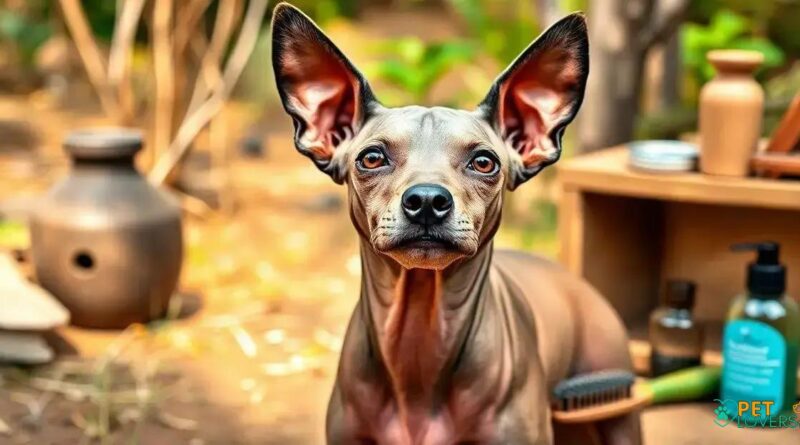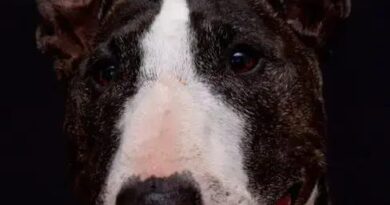Hairless Dog: The Surprising Truth Behind This Unique Breed
Hairless dogs, known for their unique appearance and wrinkled skin, require special care to maintain their skin health, as they are susceptible to skin issues, sun damage, and heat-related problems. Despite these challenges, they are affectionate companions that can thrive with proper grooming and protection from the elements.
Did you know that there are breeds of dogs that are completely hairless? It’s true! Hairless dogs have been around for thousands of years, with a rich history that spans across continents.
In this article, we’ll dive into the surprising truth behind these unique canines, exploring their origins, characteristics, and what it’s like to care for one.
Whether you’re a dog lover or simply curious about this unusual breed, you’ll find yourself enthralled by the fascinating world of hairless dogs.
History of Hairless Dogs: Uncovering the Origins
The history of hairless dogs dates back to ancient times, with evidence of their existence found in ancient civilizations such as Mexico and China.
The earliest recorded mention of hairless dogs is from the Aztecs, who considered them sacred animals.
In the 19th century, hairless dogs were brought to Europe and became popular as exotic pets.
Despite their unique appearance, hairless dogs have faced challenges in gaining recognition as a distinct breed.
However, their popularity has grown in recent years, with many breeders and enthusiasts working to preserve their heritage and promote their unique characteristics.
The Unique Characteristics of Hairless Dogs
Hairless dogs are known for their unique physical characteristics, which set them apart from their furry counterparts. Their skin is often wrinkled and folds, giving them a distinctive appearance.
Some hairless breeds, such as the Xoloitzcuintli, have a natural oily secretion that helps to moisturize their skin. Their ears and nose are often larger and more prominent than those of furry dogs, and their eyes can range in color from brown to blue.
Hairless dogs also have a unique scent, which is often described as earthy or musky. Despite their differences, hairless dogs are just as loving and affectionate as their furry counterparts, making them a great choice for dog owners who want a unique companion.
Caring for Hairless Dogs: Tips and Tricks
Caring for a hairless dog requires a unique approach, as their skin is more prone to sun damage, skin conditions, and dryness. Here are some tips and tricks to help you care for your hairless dog: Provide a healthy diet that includes omega-3 fatty acids to promote skin health.
Keep your dog’s skin moisturized
using a specialized shampoo and conditioner. Regularly clean your dog’s wrinkles and creases to prevent skin irritation and infections. Provide a comfortable and shaded area for your dog to rest and avoid direct sunlight. Regular grooming sessions can help reduce shedding and prevent skin problems. With proper care and attention, your hairless dog can thrive and live a happy and healthy life.
Health Concerns and Common Issues
Hairless dogs, like all breeds, can be prone to certain health issues. One of the most common concerns is skin problems, which can range from mild irritation to severe infections. Hairless dogs can also be more susceptible to sun damage, heat stroke, and skin cancer.
Additionally, they may experience dental issues due to their unique mouth structure. It’s essential to work closely with a veterinarian to monitor your hairless dog’s health and address any concerns promptly. Regular check-ups, proper nutrition, and preventative care can help prevent many common issues.
However, hairless dogs may require more frequent veterinary visits due to their unique needs. It’s crucial to be aware of these potential health concerns and take proactive steps to ensure your hairless dog leads a happy and healthy life.
Conclusion: The Fascinating World of Hairless Dogs
In conclusion, hairless dogs are fascinating creatures that have captured the hearts of many dog owners and enthusiasts. With their unique appearance, loving personalities, and special needs, they require a dedicated and informed approach to care.
By understanding their history, characteristics, and health concerns, you can provide the best possible life for your hairless dog. Whether you’re a seasoned dog owner or just considering bringing a hairless dog into your family, this article has provided valuable insights and tips to help you navigate the world of hairless dogs.
Remember to always prioritize your dog’s health, happiness, and well-being, and don’t hesitate to reach out to experts if you have any questions or concerns.
After exploring the history, unique characteristics, caring tips, and common issues of hairless dogs, it’s clear that these special canines require a dedicated and informed approach to care.
Whether you’re a seasoned dog owner or just considering bringing a hairless dog into your family, it’s essential to prioritize their health, happiness, and well-being.
By understanding their needs and providing the proper care, you can help your hairless dog thrive and enjoy a long, happy life.
With their loving personalities and unique appearances, it’s no wonder why hairless dogs have captured the hearts of many dog owners and enthusiasts.
By following the tips and advice outlined in this article, you can ensure that your hairless dog receives the best possible care and lives a life filled with love, comfort, and joy.
Frequently Asked Questions about Hairless Dogs
What are the unique characteristics of hairless dogs?
Hairless dogs have a unique appearance, with wrinkled and folded skin, and often have a natural oily secretion to moisturize their skin. They also have a distinctive scent and may have larger ears and nose than other breeds.
How do I care for a hairless dog’s skin?
Hairless dogs require regular grooming to keep their skin clean and moisturized. Use a specialized shampoo and conditioner, and gently clean their wrinkles and creases. Avoid using harsh chemicals or fragrances that can irritate their skin.
What health concerns do hairless dogs face?
Hairless dogs are prone to skin problems, sun damage, heat stroke, and skin cancer. Regular veterinary check-ups and preventative care can help prevent many of these issues.
Can I train a hairless dog?
Yes, hairless dogs are intelligent and can be trained with positive reinforcement. Start with basic obedience commands and gradually move on to more complex tasks.
How do I socialize a hairless dog?
Socialization is crucial for any dog, including hairless dogs. Expose your dog to new people, places, and experiences to help them become confident and well-adjusted.
What are the benefits of owning a hairless dog?
Hairless dogs are loyal and loving companions, and their unique appearance can be a conversation starter. They also require less grooming than other breeds, making them a great choice for busy owners.





